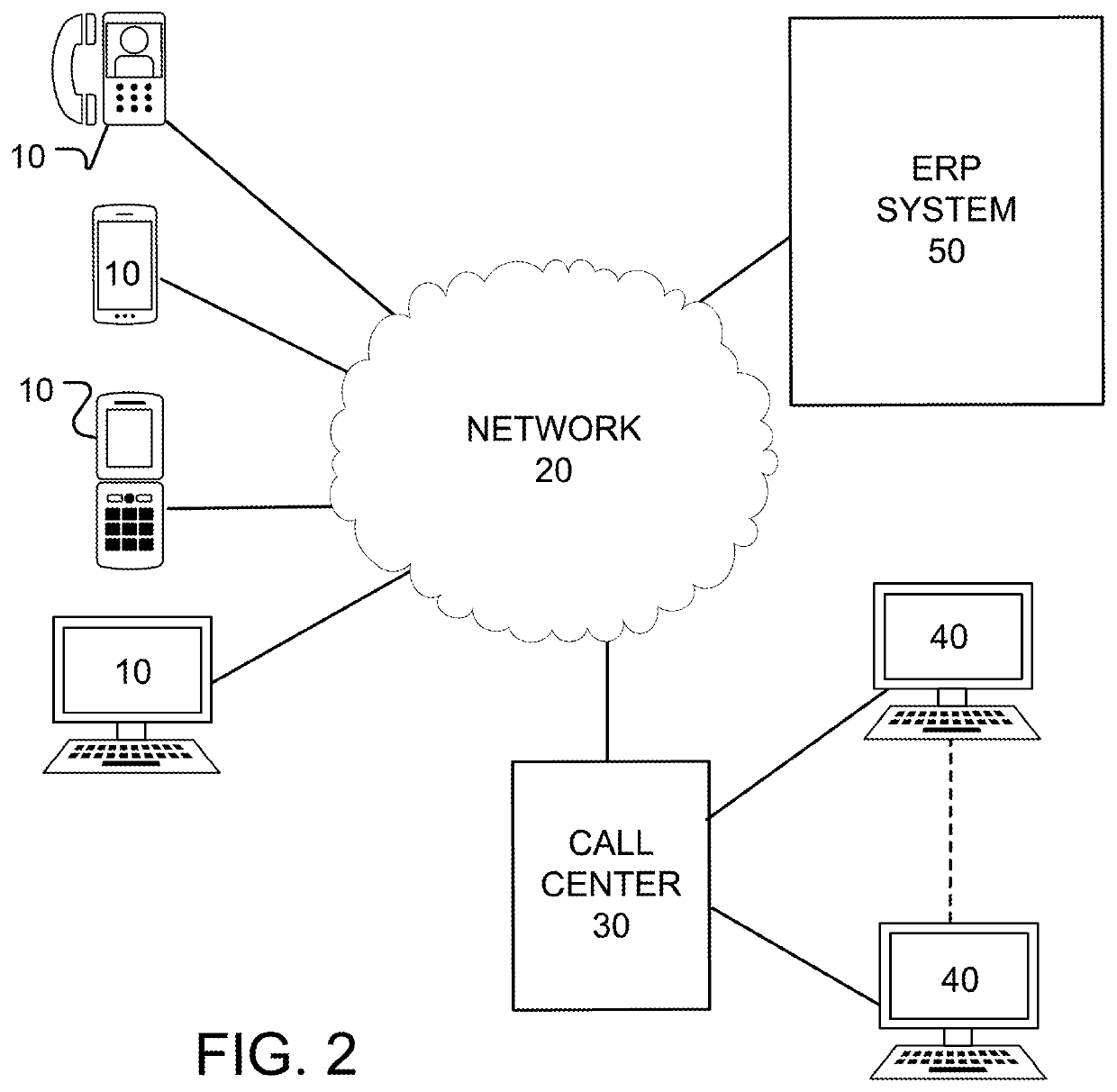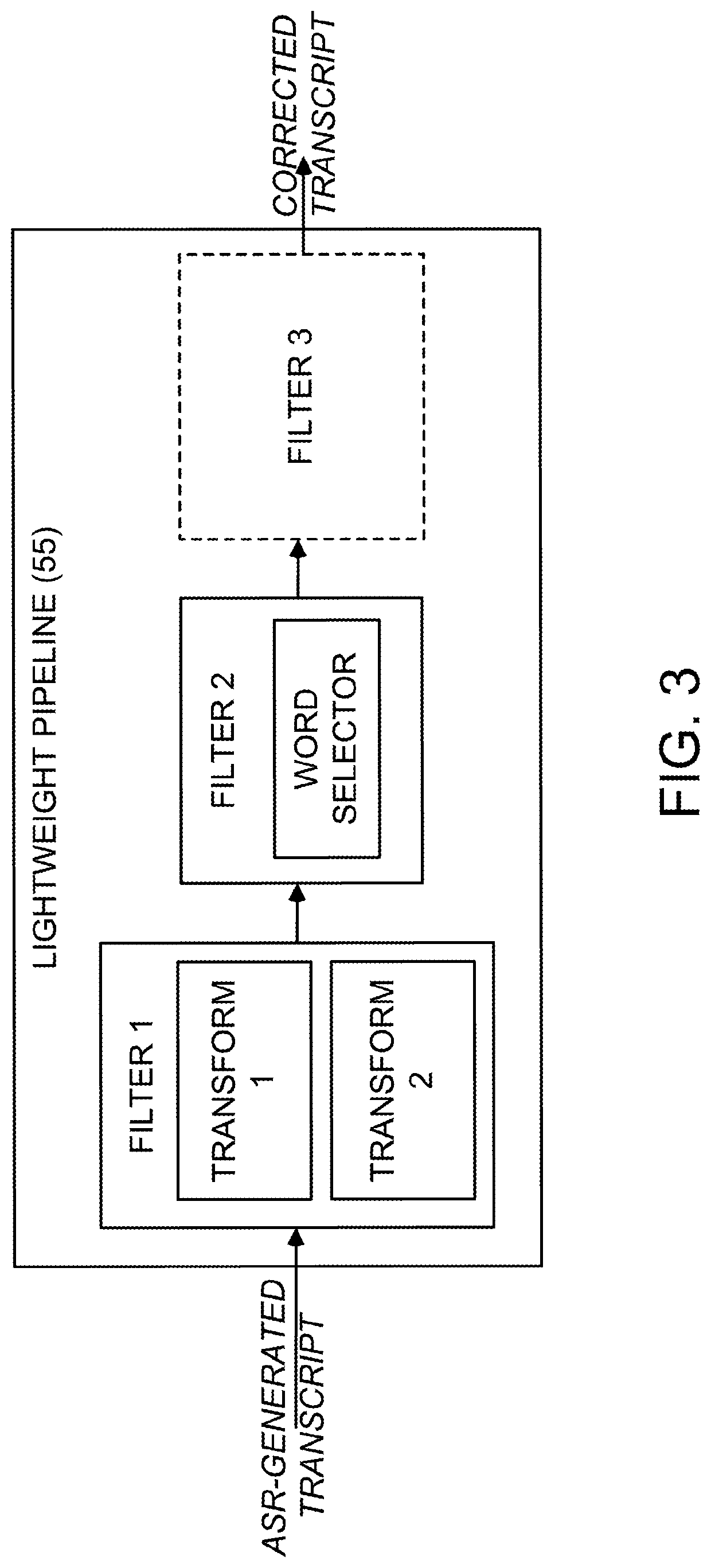System and method for disambiguation and error resolution in call transcripts
a call transcript and error resolution technology, applied in the field of system and method for disambiguation and error resolution in call transcripts, can solve problems such as ambiguity and introduce problems, and achieve the effect of low confiden
- Summary
- Abstract
- Description
- Claims
- Application Information
AI Technical Summary
Benefits of technology
Problems solved by technology
Method used
Image
Examples
example 1
[0120]In a non-limiting example, an embodiment of the RAILS model was tested on transcriptions generated by three different models used in ASR engines, namely the Kaldi Api.Ai model, the LibriSpeech model and the Zamia model (see Table V). In this example, the Kaldi Api.Ai model saw a 1.1% improvement in overall WER when only the RAILS model was applied (see Table VII). This improvement was largely a result of bringing the deletion rate down by 8%. The substitution rate, however, went up. There were instances where the RAILS model was applied on correct Kaldi transcriptions with low word confidence, which resulted in a higher substitution WER. The RAILS model was applied to all words with a confidence of 0.60 or less, the threshold found to be optimal for this model data. This threshold was optimized to maximize the number of correct replacements and minimize the number of incorrect replacements of words with low word confidence. Of all words below this threshold on which the RAILS ...
example 2
[0124]In another non-limiting example, an embodiment of the BERT model was tested on transcriptions generated by the same three models, namely the Kaldi Api.Ai model, the LibriSpeech model and the Zamia model. The pre-trained BERT model was used without fine-tuning on any dataset and, therefore, was found not to be as accurate as the RAILS model. The results of using BERT as the only model in Filter 1 (shown in FIG. 3) are shown in Table VIII. Compared to using the RAILS model, the BERT model demonstrated a consistent increase in WER when the verification dataset (discussed above) was fit with the BERT model. An interesting aspect of the BERT model's performance is shown in the last column in Table VIII, which can explain an increase in WER observed in this example. For the less complex ASR models (Api.Ai and LibriSpeech), the BERT model's net corrected was negative, while for the complex Zamia ASR model it was positive. This suggests that the BERT model works best when the neighbor...
PUM
 Login to View More
Login to View More Abstract
Description
Claims
Application Information
 Login to View More
Login to View More - R&D
- Intellectual Property
- Life Sciences
- Materials
- Tech Scout
- Unparalleled Data Quality
- Higher Quality Content
- 60% Fewer Hallucinations
Browse by: Latest US Patents, China's latest patents, Technical Efficacy Thesaurus, Application Domain, Technology Topic, Popular Technical Reports.
© 2025 PatSnap. All rights reserved.Legal|Privacy policy|Modern Slavery Act Transparency Statement|Sitemap|About US| Contact US: help@patsnap.com



